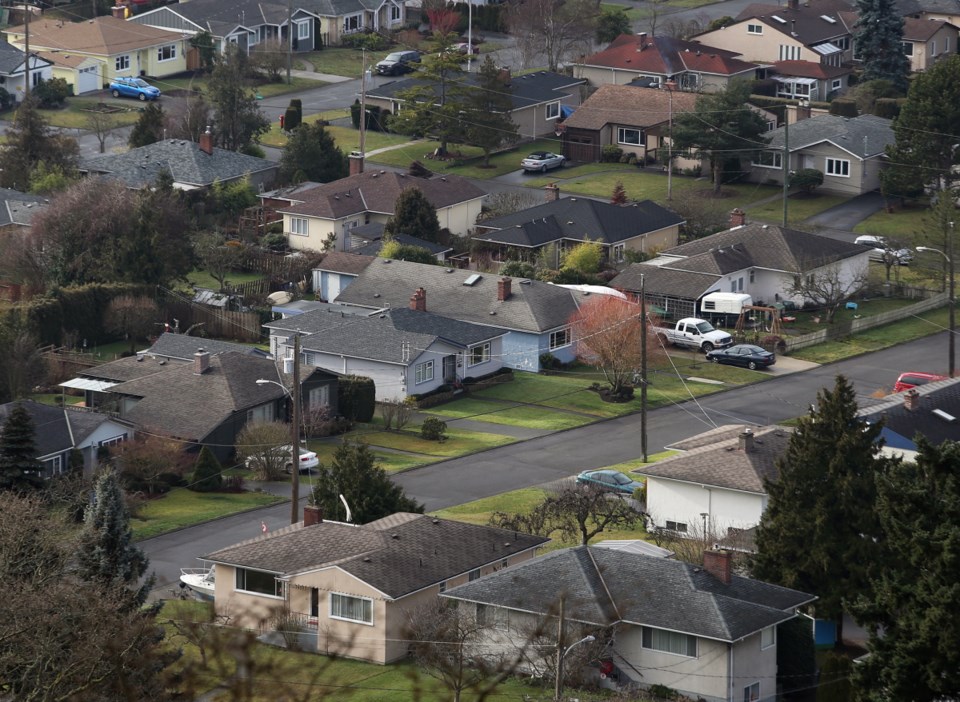Nearly 1,900 home owners in Greater Victoria are receiving letters from B.C. Assessment in the coming days warning of higher than average increases to their property values this year.
Those receiving the correspondence — 1,855 in all — could face a tax increase beyond what is typical in their municipality, officials warn.
The number of early warning letters increased by 158 per cent this year compared with last, up from 719.
A total of 37,000 letters were mailed provincewide, an increase of more than 55 per cent.
B.C. Assessment mails the letters when properties rise in assessed value by more than 15 per cent.
The assessed value reflects what the organization believes a property is worth as of July 1, 2015.
“It does not signify what the market is doing,” Reuben Danakody, B.C. Assessment’s assessor for Vancouver Island, said Friday.
Assessments can change for several reasons, he said.
A property can see a large percentage increase in assessed value, but its dollar value is not necessarily high.
Rather, it just reflects a change on that site, said Danakody.
Real estate sales in a specific area are taken into consideration, but are not the only factor in changing assessed value.
If a house is built on a bare lot, then the assessed value could spike.
For example, in Langford, 218 warning letters are being sent out, compared with 63 last year. The West Shore municipality has been a hotbed of new construction because it has lower land costs than the core municipalities.
If a property is rezoned to a higher use, even if there is no new building, then that could move up the assessment, Danakody said.
If new construction and additions or improvements have been completed, that can also result in an increase, he said.
B.C. Assessment is also updating its inventory of properties in rural areas, which is a factor in some increases in assessments in areas such as the Gulf Islands, Danakody said.
The capital region has 148,000 assessed properties this year, including residential and commercial. That total is up from 146,800 a year ago.
B.C. Assessment sends the letters before the general assessments are mailed out to give those owners extra time to examine the information and speak with their assessment office if they wish, Danakody said.
He urged anyone with questions or new information that may change the assessment to contact B.C. Assessment.
The target is for assessment notices to be mailed out Jan. 1, Danakody said.
Final assessed values for all local properties are being fine-tuned at the moment. They will be close to estimates released in October predicting that assessments for single-family houses in Greater Victoria would increase by an average of about five to 10 per cent, with some higher for more popular areas.



